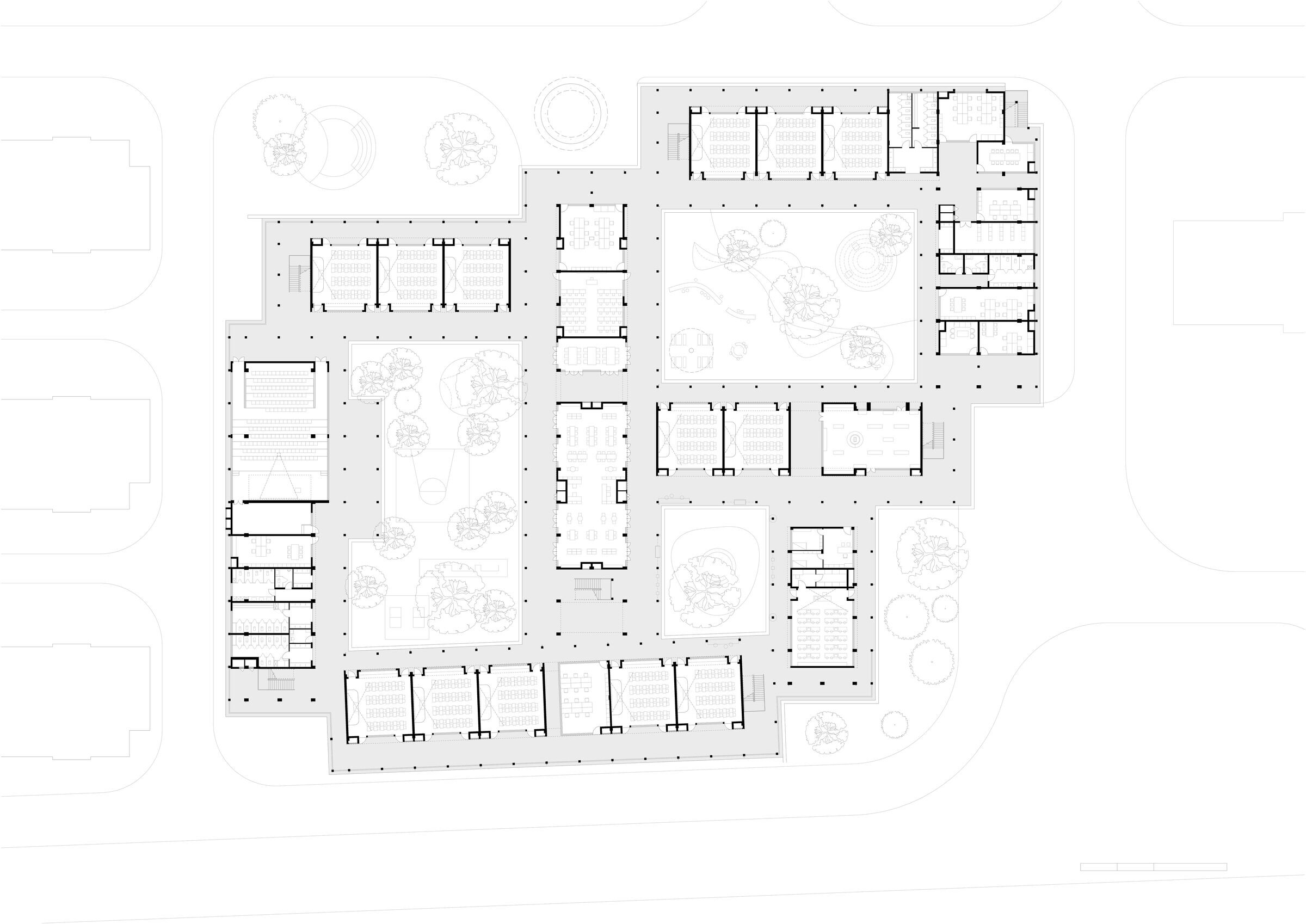This is an introspective inquiry and response about what is school and what is education.



Drawing from my personal and professional encounters, I have acquired a more extensive comprehension of education and formulated my own educational approach - "captivate initially, lead subsequently, support tenacity, and cultivate collaboratively."


Beginning of the answer
In order to extend the happy and lively educational experience to the childhood of today's children, this school not only meets the corresponding teaching functional requirements in its design but also creates more engaging and exploratory spaces. Creating environments that are both lively and peaceful, accommodating communal gatherings as well as solitary moments for children, fosters an atmosphere that encourages exploration and nurtures the growth of their interests, and spaces also promote physical development and cultivate a well-rounded personality. This has also become a central aspect of our architectural design.


Incorporating prior experience
After we had fully taken in the experience, we realized that this design ought to embody not only be a school but also a communal area filled with educational publicness throughout. Learning and education in such an environment can be compared to the moon's illumination in the night sky - silent and spare no effort, unconsciously and indispensable.

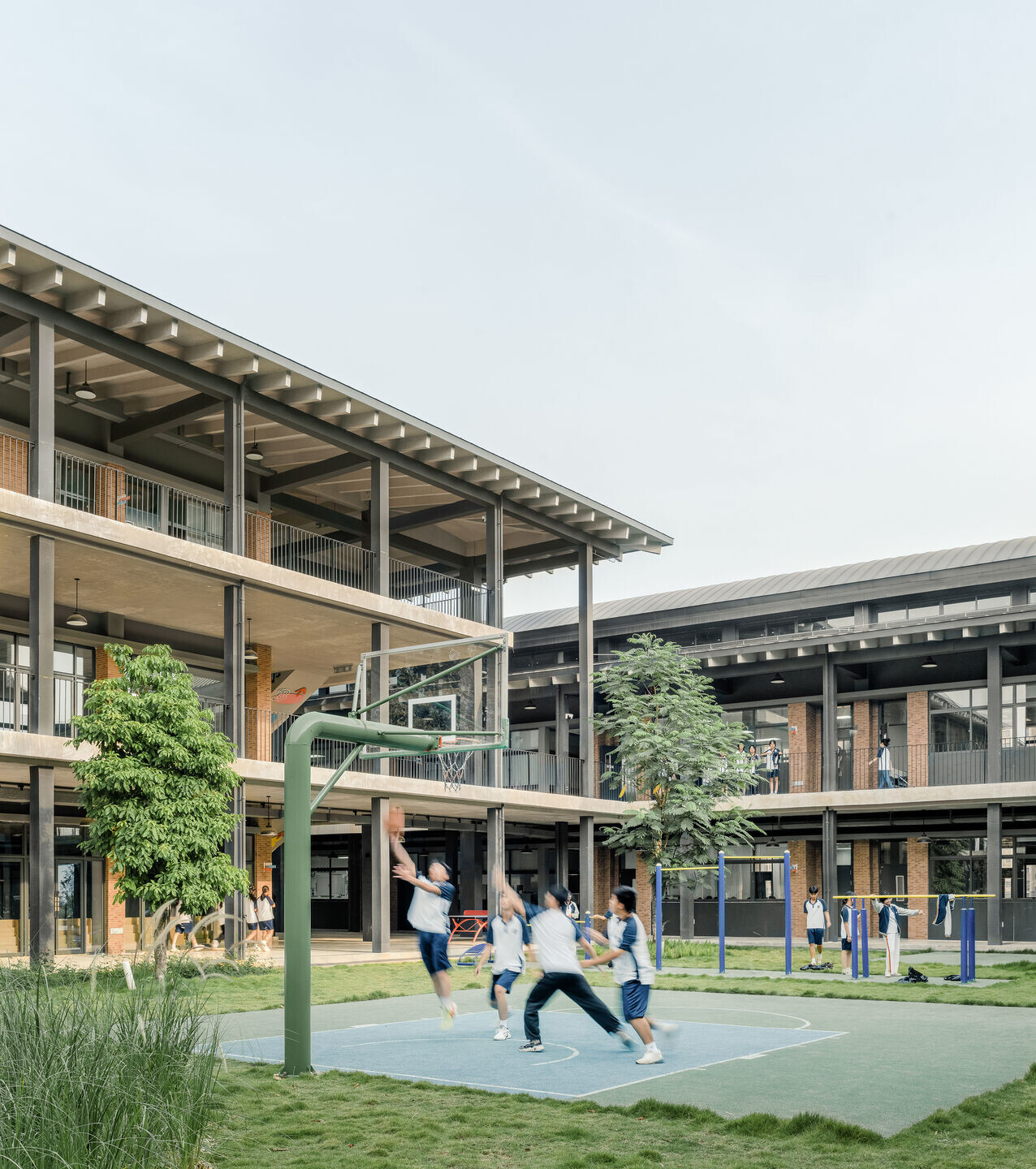
Hidden in the shade of trees: Schoolyard
The elementary school has adopted a traditional Chinese academy-style layout, featuring three courtyards arranged in a staggered manner and intermingling with each other. Such an enclosed layout provides more tranquility and safety to the courtyard space. Meanwhile, according to the monsoon characteristics of the southeastern monsoon in summer and the northeasterly monsoon in winter in Guangxi, we added openings in the southeast and northwest directions to the courtyard to ensure air circulation during summer. We also closed the northeast corner of the courtyard to reduce cold air entering in winter.


In the division of plane functions, the main functions such as ordinary classrooms, functional classrooms, and teachers' offices are scattered and intertwined. Enclosed courtyards are formed by buildings. At the intersection of the three courtyards, a library has been established to create an open center for students and teachers to frequently study and gather.

Faced with the construction conditions of accommodating about 1800 people in the school, we still choose to reduce the number of building floors,and instead design for a primarily two-story building. Utilizing this method reduces the time spent going up and down stairs providing more convenient conditions for children to immerse themselves in natural surroundings. The relatively low-rise buildings allow for more natural elements, such as wind, sunshine, and rain, to permeate the inner courtyard space and the building. As the plants in the courtyard grow and eventually surpass the height of the building, the entire edifice will be covered by a dappled tree shadow effect. This creates a relaxed and comfortable atmosphere for the entire school.
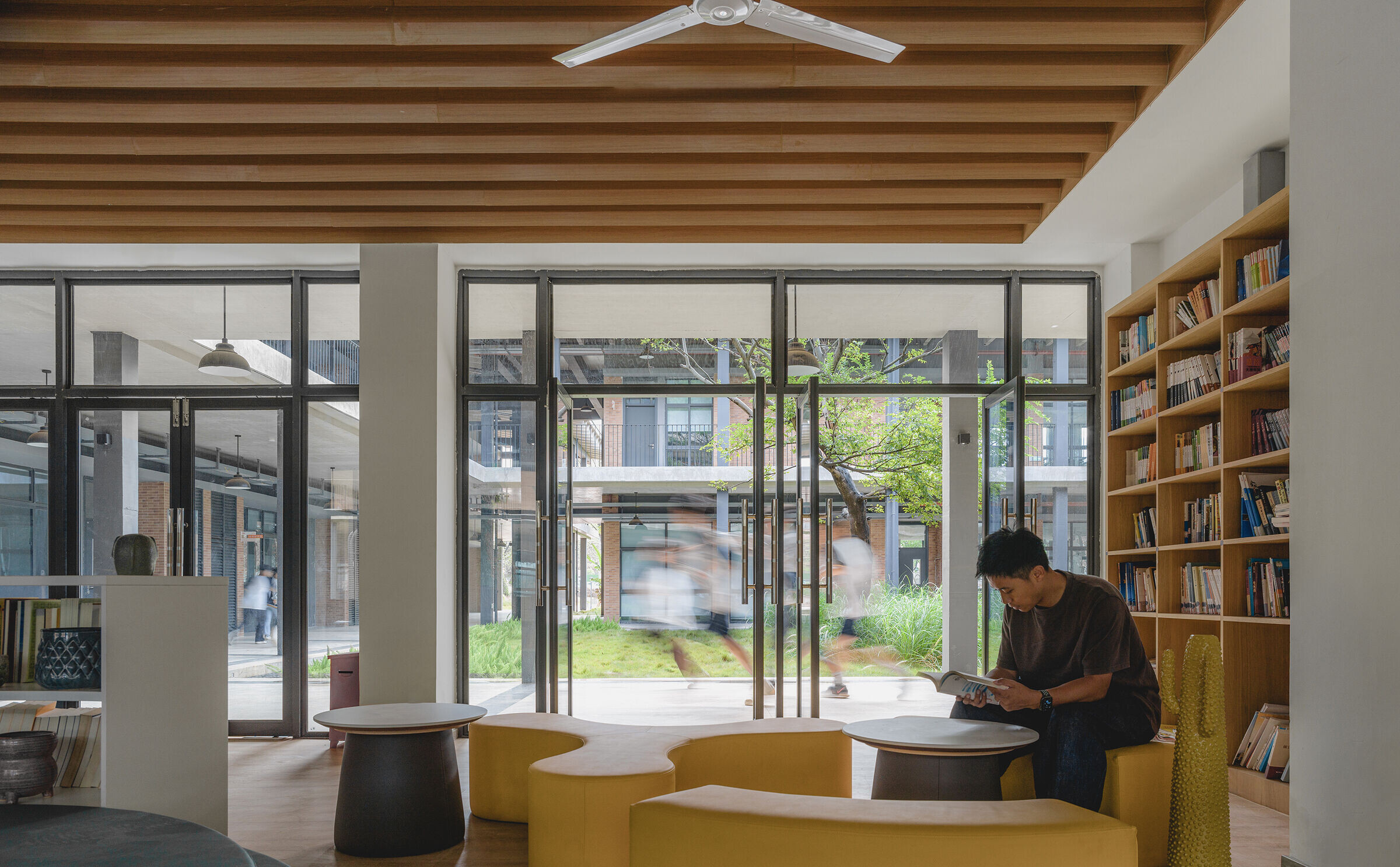
The intermingling of activity and tranquility: Courtyard
We have arranged all standard classrooms on the first and second floors, and we have installed a large number of staircases throughout the building. A fixed entrance for the building is intentionally not set, and the corridors directly connect to the courtyards. This will significantly improve the convenience of reaching the courtyard from the classrooms. Even though the break between classes is only ten minutes, students can easily go to various courtyards on the first floor. The scale of the courtyards varies, giving rise to diverse atmospheres. The dynamic and static states of the campus can coexist harmoniously without disrupting one another.
The largest courtyard boasts a spacious expanse that includes the installation of more athletic amenities and playing fields. In the courtyard, children can stretch and play on the bars, compete on the basketball court, or just chasing and running after each other. This type of scene creates a livelier atmosphere in the space, and fosters closer communication among students through sports.

The moderately-sized courtyard is a place where students can participate in outdoor painting courses and engage in group activities that promote interaction. Within the grounds, there is a pathway. Compared to the liveliness of the sports court, the rhythm of this courtyard is slower and more relaxed. The relationship between students, teachers, and classrooms has become less formal, creating a more relaxed atmosphere for learning and education.
With an abundance of plants, the third courtyard exudes a vibrant atmosphere. A magnificent tree stands tall and proud at the very heart of the courtyard, with its leaves rustling gently in the breeze. Under the shade of the tree, children sing and whisper to each other. They lie on the grass, watching as tiny insects crawl and hop around them, happy about the subtle changes that occur in nature. The children immerse themselves in silent conversations with natural.
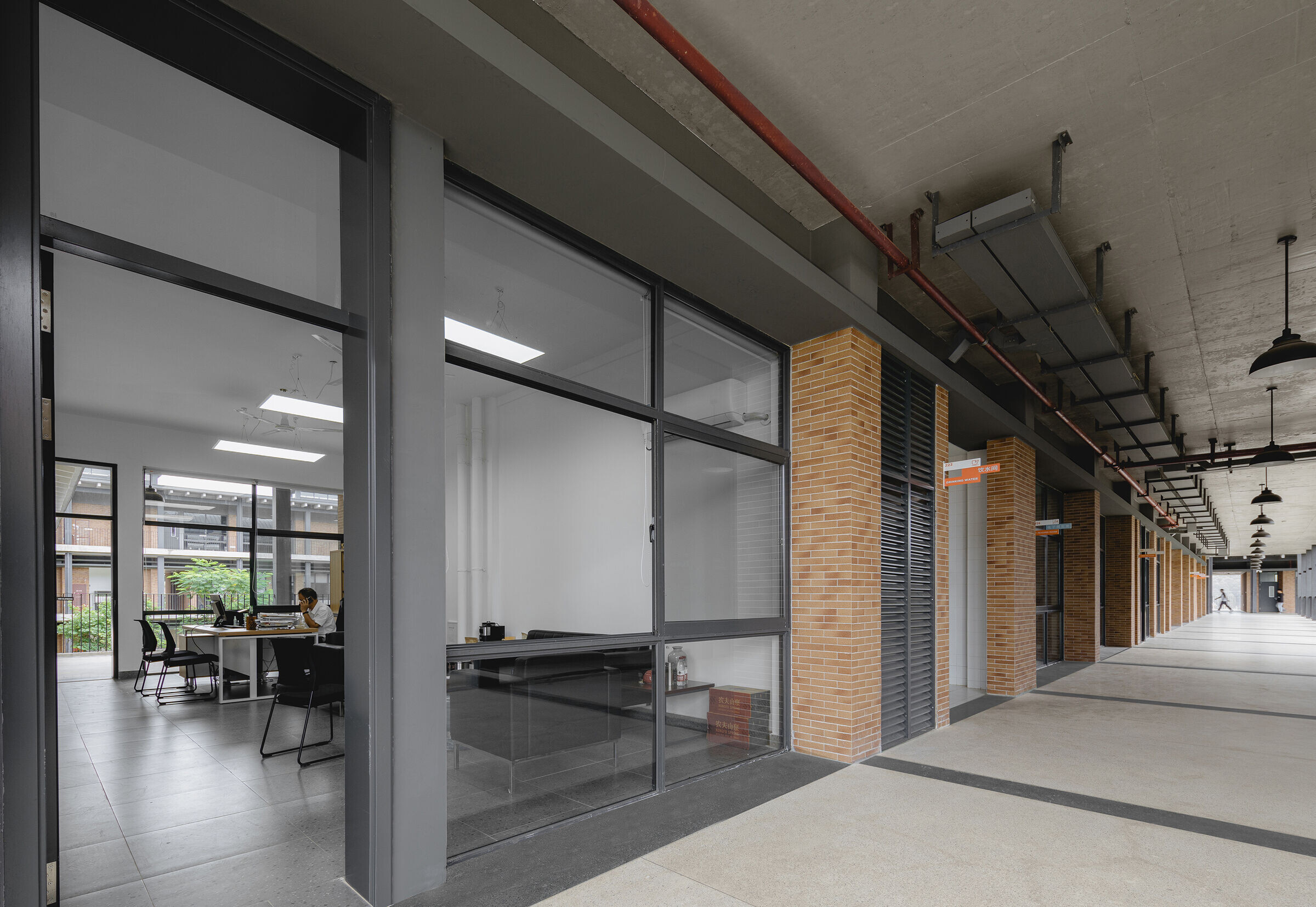
Blurred the boundaries of space: Corridor
Each individual building within the enclosed courtyard is like a giant tree, in harmony with the tall and short plants and trees that surround it. The roof, with its giant eaves, provides ample shade for the classroom and also supports the spacious corridor.
A circular corridor surrounds the functional spaces, including classrooms and offices, located in the center. Doors are set up on both sides of the room, allowing teachers and students to exit in different directions while following the traffic flow along the circular corridor of the teaching building until they meet. This approach can not only ease the traffic pressure caused by the concentration of various functions in the school, but also create more opportunities for users of the school to meet and communicate.

The spacious corridors are also as an extension to the teaching spaces. For example, by placing some Ping-Pong tables and benches in the corridor, learning, socializing, or gaming are all become reasonable here. The boundaries of space usage begin to blur which further diversifies and enriches the space. Our aspiration is to utilize spatial design as a means of extending the scope of education beyond the traditional confines of the classroom. This will transform schools into more than mere settings for classes. For example, learning can be facilitated not only within the classroom but also in the corridors and even in the outdoor courtyard. This will allow children to transition from passive education to active, self-directed learning.

Experience the sunshine and wind: Classroom
In my opinion, when pursuing nature, it is essential that we focus not only on plant growth but also on sunlight and wind.
The classroom is located under the roof, with two-way lighting and two-way balconies. This creates a sense of openness in the space and visual communication of transparency. Children are able to observe their teachers outside of the classroom through the large window. They can also keep an eye out for their favorite peers from the adjacent class as they walk past the window. Eye contact can expand the boundaries of space and break down various barriers and suspicions.

There is an arch above the sloping roof. We opened windows between the arches roof and sloping roofs of the building to create a chimney effect. This is more conducive to hot air discharge, we can feel the wind flowing without the need for air condition. The dome space in the classroom provides a mezzanine that can be used as a reading nook, which widens the boundary between learning and relaxation.
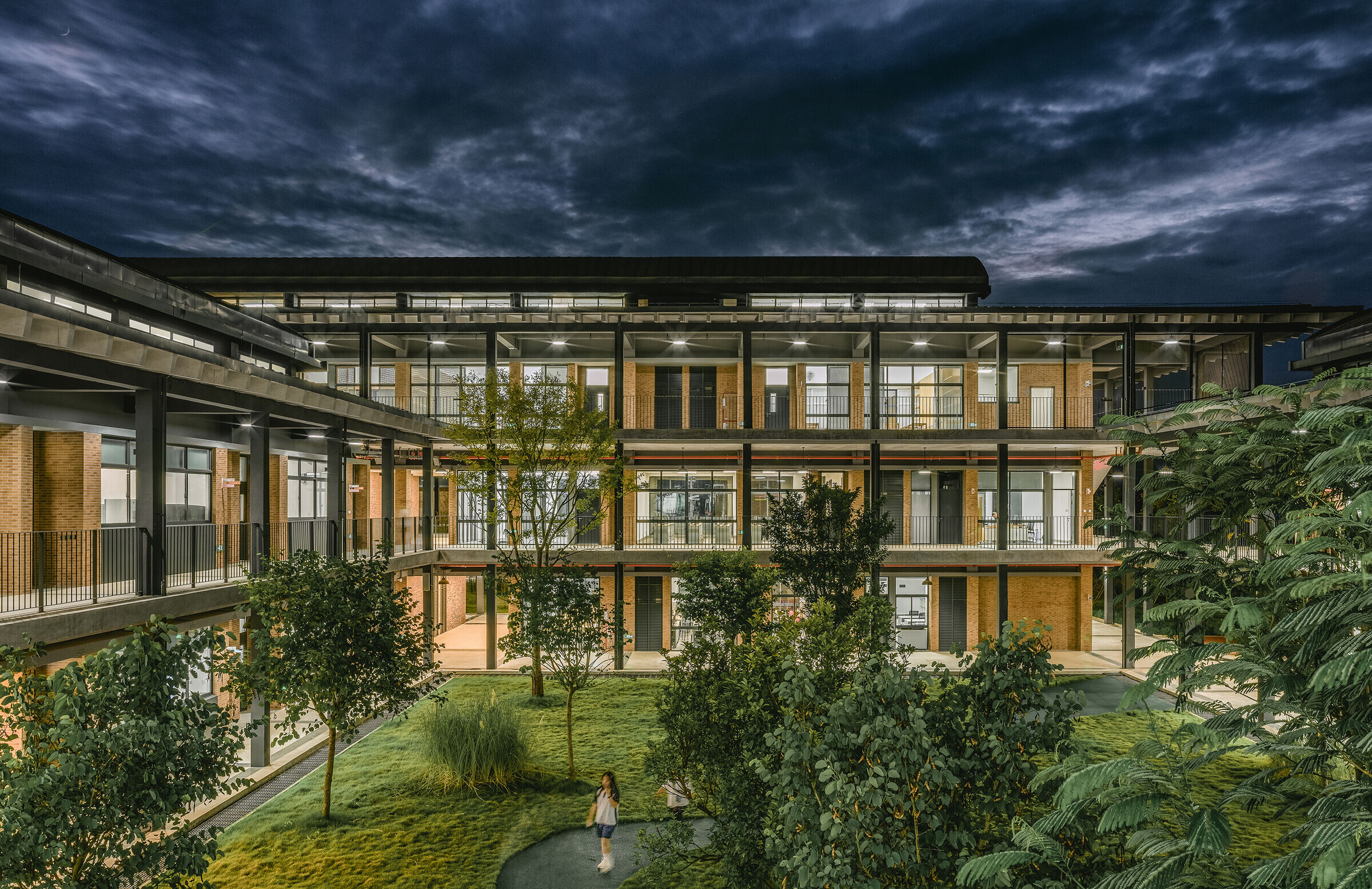
Certain buildings evoke powerful emotions in individuals through their shock, while some buildings evoke feelings of tenderness through their gentleness. We hope that the magnificent trees formed by the buildings we design can become a tranquil and abundant independent forest. This place does not need be specifically a school; it is merely a communal space and a platform, a platform for public education. As teachers and children collaborate in establishing a shared education, they are also enlightened by the communal aspect of education. They gain self-awareness, explore their individual abilities, and nurture them.
My child has grown up in the blink of an eye. It appears that he and I grew up in tandem based on the pedagogical perspectives we have nurtured together. Education is like the illuminating radiance of the moon that allow us to perceive ourselves amidst the midst of the darkness.
